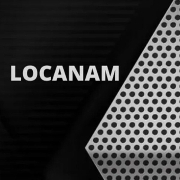Fused Deposition Modeling (FDM) is a type of 3D printing technology that works by extruding thermoplastic material layer by layer to create a three-dimensional object. Here's how it generally works:
Designing the Model: First, you create a 3D model of the object you want to print using CAD (Computer-Aided Design) software or by downloading a pre-made model from online repositories.
Slicing: The 3D model is sliced into thin horizontal layers using slicing software. This software generates a set of instructions (G-code) for the 3D printer to follow, including details about the path the extruder will take and the temperature settings.
Printing: The sliced layers are sent to the FDM 3D printer. The printer heats...
Fused Deposition Modeling (FDM) is a type of 3D printing technology that works by extruding thermoplastic material layer by layer to create a three-dimensional object. Here's how it generally works:
Designing the Model: First, you create a 3D model of the object you want to print using CAD (Computer-Aided Design) software or by downloading a pre-made model from online repositories.
Slicing: The 3D model is sliced into thin horizontal layers using slicing software. This software generates a set of instructions (G-code) for the 3D printer to follow, including details about the path the extruder will take and the temperature settings.
Printing: The sliced layers are sent to the FDM 3D printer. The printer heats the thermoplastic material (usually filament) to its melting point and extrudes it through a nozzle. The nozzle moves according to the instructions in the G-code, depositing the melted material layer by layer onto a build platform. The material quickly solidifies as it cools, bonding to the layer below it.
Layer by Layer Construction: The printer continues this process, building up the layers one by one until the entire object is created.
Post-Processing: Once the printing is complete, the object may require some post-processing, such as removing support structures (if used), sanding, painting, or other finishing techniques to achieve the desired final appearance.
FDM 3D printing is popular for its versatility, affordability, and ease of use. It's commonly used for prototyping, custom manufacturing, and producing functional parts across various industries, including automotive, aerospace, healthcare, and consumer goods. However, it may not offer the same level of detail or surface finish as other 3D printing technologies like Stereolithography (SLA) or Selective Laser Sintering (SLS).
